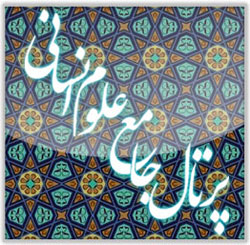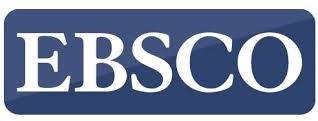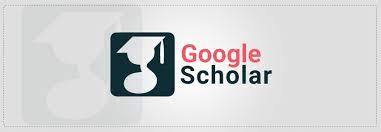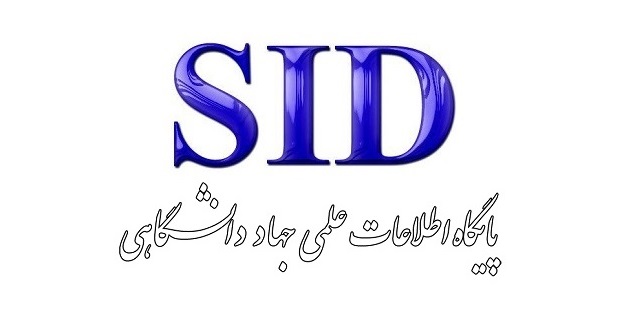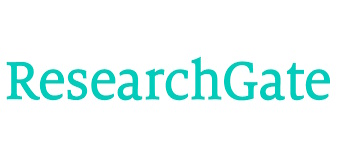تبیین مدل ساختاری- تفسیری تاثیرات غیرمستقیم ورزش بر اقتصاد کلان شهرها در ایران
کلمات کلیدی:
ورزش, اقتصاد شهری, کلان شهر, تاثیرات اقتصادیچکیده
هدف این پژوهش تبیین مدل ساختاری- تفسیری تاثیرات غیرمستقیم ورزش بر اقتصاد کلان شهرها در ایران بود. این پژوهش از منظر هدف کاربردی، از نظر نوع دادهها کیفی و از نظر روش تحلیل دادهها از نوع اکتشافی و از نظر زمان حال نگر و روش جمعآوری دادهها میدانی بود. در تحقیق حاضر جامعه آماری شامل اعضای هیات علمی و افرادی که مدیر بخشهای دولتی مرتبط با توسعه اقتصادی مانند مدیران شهرداری و اعضای شورای شهر و همچنین مدیران اداره کل ورزش و جوانان برخی از استانهای بزرگ بودند. روش نمونه گیری نظری به صورت هدفمند تا رسیدن به اشباع نظری بود که در نهایت با 9 مصاحبه اشباع نظری حاصل شد. در قسمت مدل سازی ساختاری تفسیری پنل دلفی با استفاده از 5 نفر خبره مسلط به حوزه اقتصاد ورزشی تشکیل شد و در نهایت اقدام به امتیاز دهی به مولفهها شد. در نهایت 47 کد باز در قالب 6 کد محوری و یک کد گزینشی به عنوان تاثیرات غیرمستقیم ورزش بر کلانشهرها به دست آمد. مدل سازی ساختاری-تفسیری با استفاده از نرم افزار میک مک انجام شد و نتایج نشان داد که دو مولفهی گردشگری ورزشی و سلامت جامعه تاثیرگذارترین و مولفهی بهرهوری کارکنان کم اثرترین مولفه در بین سایر مولفهها بر اقتصاد کلان شهرها در ایران بودند. با توجه به تاثیرگذاری غیرمستقیم ورزش بر اقتصاد کلان شهرها به نظر میرسد لزوم توجه مسئولان به توسعه ورزش در شهرهای بزرگ احساس میشود.
دانلودها
مراجع
Barzegar Yazdi, Z., Majedi, N., & Naderi Nasab, M. (2023). A Model for Women's Consumption Pattern in the Field of Sports Goods. Strategic Studies on Youth and Sports, 22(61), 635-638. https://faslname.msy.gov.ir/article_705.html
Brown, K. M., Hoye, R., & Nicholson, M. (2014). Generating trust? Sport and community participation. Journal of Sociology, 50(4), 437-457. https://doi.org/10.1177/1440783312467091
Charron, N., & Rothstein, B. (2018). Regions of trust and distrust: How good institutions can foster social cohesion. In Bridging the Prosperity Gap in the EU (pp. 220-242). Edward Elgar Publishing. https://doi.org/10.4337/9781786436672.00017
Cubizolles, S. (2015). Sport and social cohesion in a provincial town in South Africa: The case of a tourism project for aid and social development through football. International Review for the Sociology of Sport, 50(1), 22-44. https://doi.org/10.1177/1012690212469190
Esmaeili, D. (2024). The role of economic environmental factors in crime commission and criminal responsibility. Quarterly Journal of Economic Jurisprudence Studies, 6(2), 209-224. https://doi.org/10.22034/ejs.2024.459701.1813
Gövdeli, T. (2019). Health expenditure, economic growth, and CO2 emissions: evidence from the OECD countries. Adıyaman Üniversitesi Sosyal Bilimler Enstitüsü Dergisi(31), 488-516. https://doi.org/10.14520/adyusbd.477571
Habibi Vatan, M., Nourbakhsh, M., Nourbakhsh, P., & Navabi Nejad, S. (2018). The impact of physical activity on productivity, reduction of illness-related absenteeism, and job commitment of female employees at Islamic Azad University. Journal of Sports Management, 10(3), 581-594. https://doi.org/10.22059/jsm.2017.229222.1799
Han, Z., Sun, I. Y., & Hu, R. (2017). Social trust, neighborhood cohesion, and public trust in the police in China. Policing: An International Journal of Police Strategies & Management, 40(2), 380-394. https://doi.org/10.1108/PIJPSM-06-2016-0096
Hatami, M., & Rouhani, A. (2023). The role of leisure activities based on physical activity in the productivity of teachers in Shiraz. New Ideas in Physical Education, 1(1), 18-28. https://doi.org/10.22034/ntes.2024.394790.1001
Huda, H. (2012). Investors' opinions about sports marketing in Bahrain. The Sport Journal. https://thesportjournal.org/article/investors-opinions-about-sports-marketing-in-bahrain/
Javid, F., Ghafouri, F., Javid, M., & Goudarzi, S. (2020). Sports tourism and sustainable development of host cities (Case study: Sarin Winter Sports Festival). Strategic Studies in Sports and Youth, 19(48), 197-217. https://doi.org/10.22059/jsm.2013.32171
Javid, M., Naghipour, B., & Almasi, H. (2015). Sports tourism and its economic impacts on host communities. Sports Management Studies, 7(32), 13-32. https://sid.ir/paper/514159/fa
Keehan, S. P., Cuckler, G. A., Sisko, A. M., Madison, A. J., Smith, S. D., Lizonitz, J. M., & Wolfe, C. J. (2012). National health expenditure projections: modest annual growth until coverage expands and economic growth accelerates. Health Affairs, 31(7), 1600-1612. https://doi.org/10.1377/hlthaff.2012.0404
Kończak, J. (2021). Sports themes in advertising. Journal of Physical Education and Sport, 21, 1179-1184. https://efsupit.ro/images/stories/aprilie2021/Art%20149.pdf
Kordlou, H., Elahi, A., & Khodayari, A. (2015). Standardization of the measurement tool for the credibility of advertisements through sports. Research in Sports Management and Movement Behavior, 25, 61-72. https://jrsm.khu.ac.ir/article-1-2295-fa.html
Masanovic, B. (2018). Attitudes of Consumers from Autonomous Province of Vojvodina toward Advertising through Sport in relation with the Frequency of Watching Sports Events. Sport Mont, 16(3). http://www.sportmont.ucg.ac.me/?sekcija=article&artid=1432
Molnar, S., Lilić, L., Popović, S., Akpinar, S., & Jakšić, D. (2011). Attitudes of various demographic groups toward advertising through sport at METU. Facta Universitatis: Series Physical Education & Sport, 9(3). https://www.researchgate.net/publication/237071811
Moradi Chalashtari, J., Moradi, M. R., Noorouzian Qahfarakhi, S., & Jafari, A. (2013). Examining economic barriers affecting the attraction of foreign investment in the football industry of the Islamic Republic of Iran. Journal of Sports Management, 5(2), 129-147. https://doi.org/10.22059/jsm.2013.32171
Naghi, M., & Khadem Amir, R. (2021). Examining the role of sports event tourism in the economic development of the Turkmen Sahra region in Golestan Province (Case study: Equestrian competitions). New Approaches in Sports Management, 9(35), 83-102. https://ntsmj.issma.ir/article-1-1705-fa.html
Nasiri, M., & Dastoom, S. (2020). Designing a model for analyzing the ecosystem of citizen sports and planning its development (Case study: Bandar Anzali city). Management and Sports Development, 9(2), 155-173. https://doi.org/10.22059/sd.2020.391522
Pereira, M. J., Coombes, B. K., Comans, T. A., & Johnston, V. (2015). The impact of onsite workplace health-enhancing physical activity interventions on worker productivity: a systematic review. Occupational and Environmental Medicine, 72(6), 401-412. https://doi.org/10.1136/oemed-2014-102678
Perez-Perez, M., Serrano Bedia, A. M., Concepcion Lopez-Fernandez, M., & García-Piqueres, G. (2018). Research opportunities on manufacturing flexibility domain: A review and theory-based research agenda. Journal of Manufacturing Systems, 48(1), 9-20. https://doi.org/10.1016/j.jmsy.2018.05.009
Razavian, S., Majidi, N., & Mohammadiat, F. (2020). Analyzing the effect of virtual communication networks on the attitudes and sports participation of Tehran citizens. Strategic Studies in Sports and Youth, 19(47), 223-246. https://faslname.msy.gov.ir/article_367.html
Spruit, A., Van Vugt, E., Van Der Put, C., Van Der Stouwe, T., & Stams, G. J. (2016). Sports participation and juvenile delinquency: A meta-analytic review. Journal of youth and adolescence, 45, 655-671. https://doi.org/10.1007/s10964-015-0389-7
Taylor, I. (2020). The political economy of crime. In Crime, Inequality and the State (pp. 353-365). https://doi.org/10.4324/9781003060581-27
Wikner, J., & Backstrand, J. (2018). Triadic perspective on customization and supplier interaction in customer-driven manufacturing. Production & Manufacturing Research, 6(1), 3-25. https://doi.org/10.1080/21693277.2017.1415825
Zeytunlu, A., Farahani, A., & Asadi, H. (2013). Sports tourism and its long-term economic effects: A study of the perspectives of tourism and physical education experts and tourists regarding the impacts of sports tourism development on employment and income in Golestan Province. New Approaches in Sports Management, 1(1), 9-18. http://ntsmj.issma.ir/article-1-64-fa.html
دانلود
چاپ شده
ارسال
بازنگری
پذیرش
شماره
نوع مقاله
مجوز
حق نشر 2025 Reza Alizadeh (Author); Shahriar Kharazian; Hakimeh Hatef, Ali Hoseinzadeh Gonabadi (Author)

این پروژه تحت مجوز بین المللی Creative Commons Attribution-NonCommercial 4.0 می باشد.


